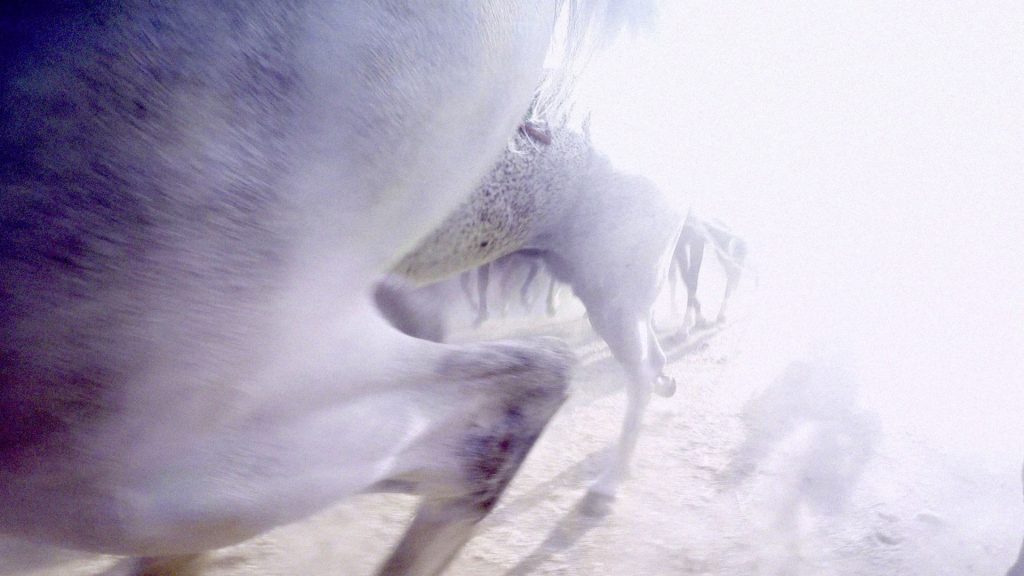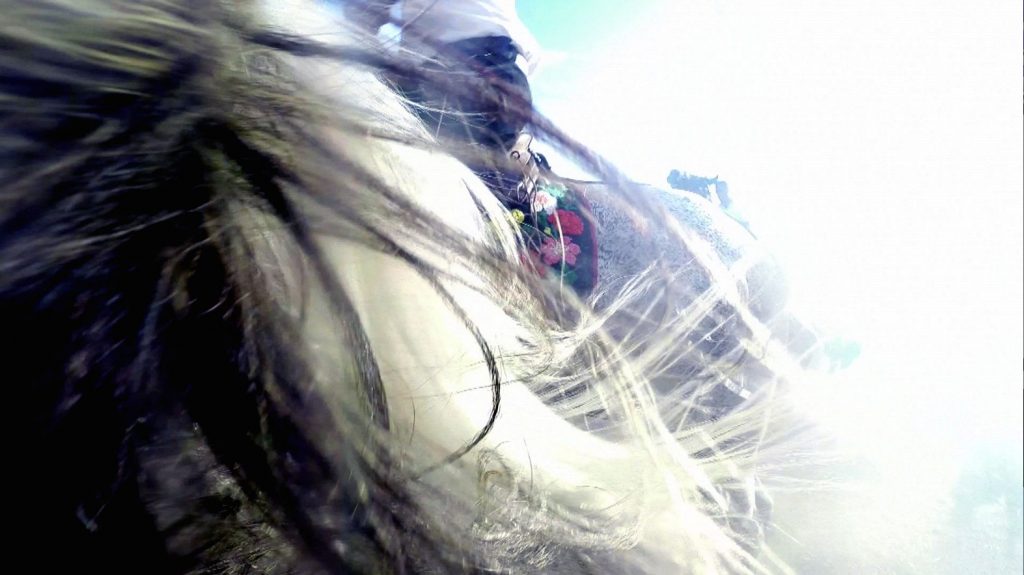Teaser of Tutto di Contrappunto.
Tutto di Contrappunto is a film essay on rite, violence, and movement from the observation of the dust raised after the ritual race, “Ardia de San Constantino” (Sardinia). One hundred horses and their riders run a circuit around the Church of St. Constantino to commemorate the triumph of the Catholic faith over paganism. Multiple immersive cameras film the interaction of the bodies at speed from the legs of the riders, from the back of the horses, from the muscles in effortful activity, through the dust raised by the fast legs of the horses. A story that navigates from abstraction to figuration, from the individual to the collective, from the human to the non-human, and from restrainment to excess. Challenging the spectator with the questions: Where do we look from? How do we look? Tutto di Contrapunto reflects on tradition, its representation, and the conflicts of its repetition.
Tutto di Contrappunto es un ensayo fílmico sobre rito, violencia, movimiento, desde la observación del polvo levantado tras la veloz carrera ritual llamada “Ardia de San Constantino” (Cerdeña). Cien caballos montados por sus jinetes corren alrededor de la Iglesia de San Constantino para conmemorar el triunfo de la fe católica sobre el paganismo. Filmado en inmersión, múltiples cámaras registran la interacción de los cuerpos en velocidad, las piernas de los jinetes, los lomos de los caballos, los músculos en esfuerzo para configurar el relato del movimiento mismo. Un relato que navega entre la abstracción y la figuración, lo individual y lo colectivo, lo humano y lo no humano, la contención y el desborde. Interpelando al espectador con las preguntas ¿desde dónde miramos? ¿cómo miramos? Tutto di Contrapunto reflexiona sobre la tradición, su representación y los conflictos de su repetición.
—————————–
This project was part of the MOB residency program of the Man Museum, Nuoro, Sardinia. This project was selected by the FNAGP patronage commission, which provided its support. Supported by the Ministry of Cultures, Arts, and Heritage, 2018.

